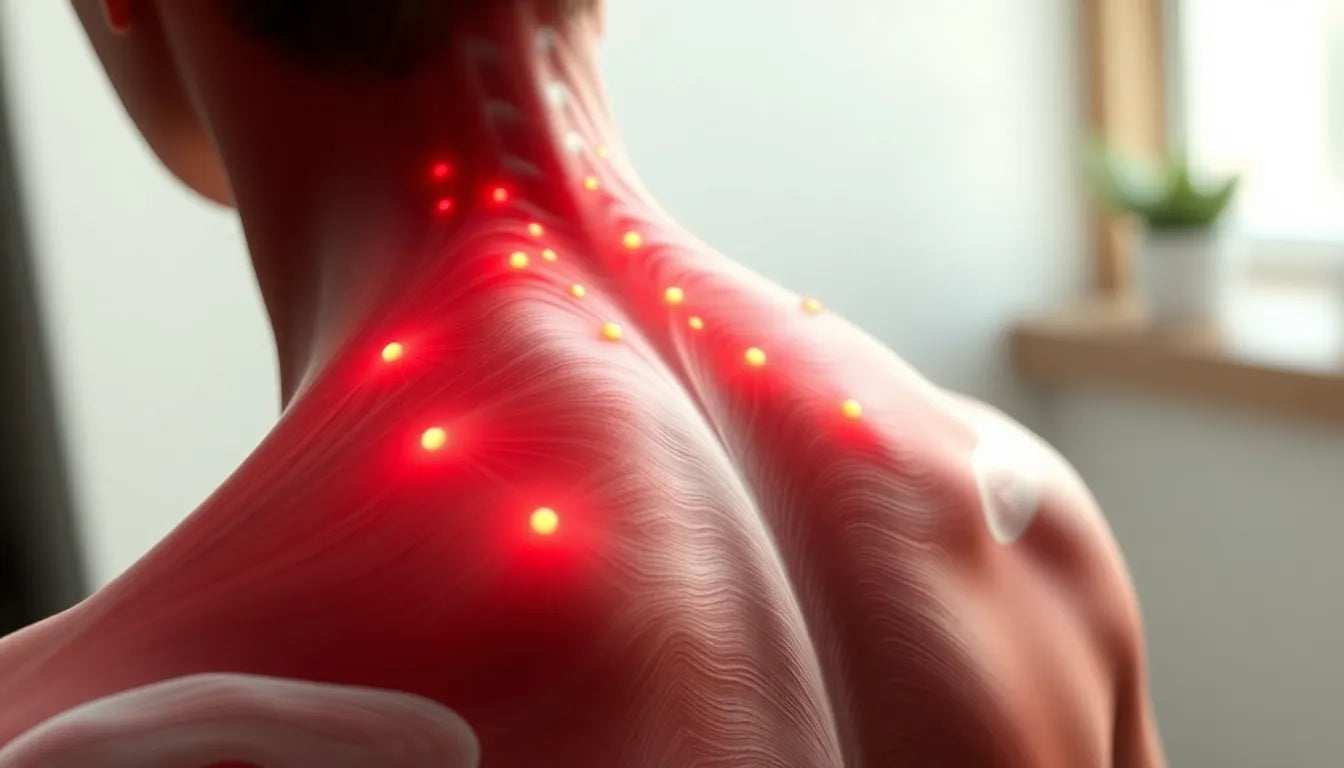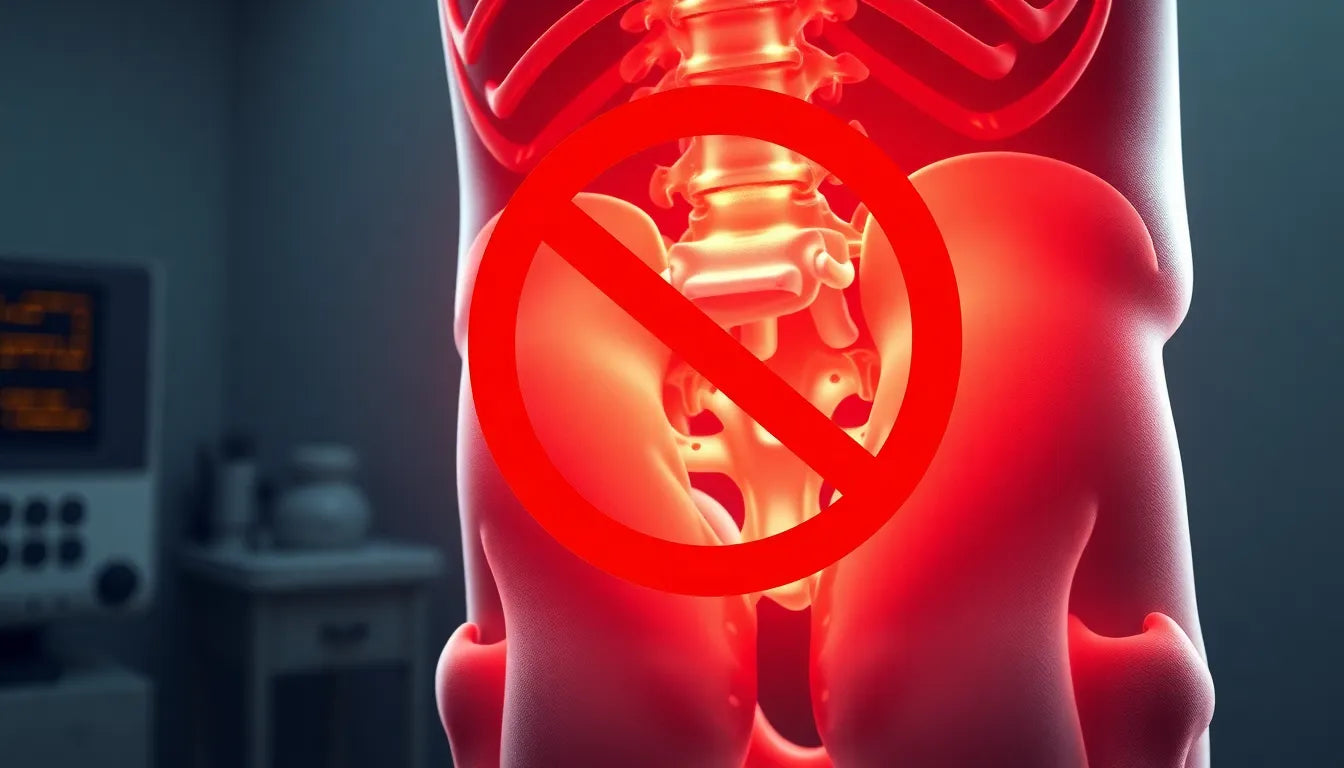Neck pain is a common ailment that can significantly impact your day-to-day life, hindering productivity and overall well-being. Whether it's a dull ache or a sharp, persistent pain, discomfort in the neck area can make simple tasks seem daunting. Among the various causes of neck pain, a herniated disc in the neck, also known as a cervical herniated disc, is a condition that deserves particular attention due to its potential to disrupt nerve function and cause widespread discomfort.
Understanding a herniated disc in the neck
A herniated disc in the neck occurs when the soft, gel-like center of an intervertebral disc protrudes through a tear in its tougher exterior. This protrusion can extend into the spinal canal, where it may press on nearby nerves, leading to pain and other neurological symptoms. The cervical spine, which comprises the uppermost part of the spinal column, is particularly susceptible to this condition due to its range of motion and the stress it endures from supporting the head.
Understanding what a herniated disc in the neck entails is crucial for managing the condition effectively and preventing further complications. When a disc herniates, it can cause not only localized neck pain but also radiating pain that affects the shoulders, arms, and even hands. This is because the nerves in the cervical spine are responsible for transmitting signals to these areas. Therefore, any compression or irritation of these nerves can lead to a cascade of symptoms that affect daily activities and quality of life.
The importance of awareness
Recognizing the signs and understanding the underlying mechanisms of a herniated disc in the neck is vital for several reasons. Firstly, early identification and intervention can alleviate symptoms and prevent the condition from worsening. Secondly, being informed about this condition empowers individuals to make informed decisions about their health, including seeking appropriate medical advice and exploring treatment options.
Moreover, awareness of the risk factors and causes—such as aging, trauma, or degenerative disc disease—can aid in adopting preventative measures. Simple lifestyle changes, like maintaining good posture, engaging in regular exercise, and ensuring ergonomic workspaces, can significantly reduce the likelihood of developing a herniated disc in the neck.
In summary, a herniated disc in the neck is a condition that can profoundly affect one's life, but with the right knowledge and proactive measures, its impact can be managed effectively. Understanding this condition is the first step towards reclaiming comfort and mobility, paving the way for a healthier, pain-free future.
anatomy and mechanism of a herniated disc in the neck
The cervical spine, which is the uppermost part of the spinal column, plays a crucial role in supporting the head and allowing for a wide range of motion. It consists of seven vertebrae, labeled C1 through C7, and intervertebral discs that act as cushions between these bones. These discs are composed of a tough outer layer called the annulus fibrosus and a soft, gel-like center known as the nucleus pulposus. The primary function of these discs is to absorb shock and facilitate movement.
A herniated disc occurs when the nucleus pulposus pushes through a tear in the annulus fibrosus, often likened to jelly leaking out of a doughnut. This protrusion can encroach into the spinal canal, where it may compress nearby nerves. As the Cleveland Clinic explains, this process can lead to significant discomfort and neurological symptoms due to the pressure on the nerves that travel from the neck to the shoulders, arms, and hands.
causes of cervical herniated discs
Several factors can contribute to the development of a herniated disc in the neck. Aging is a primary cause, as the discs naturally lose hydration and elasticity over time, making them more prone to tears and herniation. Degenerative disc disease, a condition characterized by the gradual deterioration of the discs, often accompanies aging and further increases the risk.
Trauma, such as a sudden impact or injury to the neck, can also cause a disc to herniate. This can occur from accidents, falls, or even activities that place undue stress on the cervical spine. According to insights from UF Health and the Cleveland Clinic, these factors, combined with poor posture or repetitive strain, can significantly elevate the likelihood of a herniated disc.
symptoms and diagnosis of a herniated disc in the neck
Identifying the symptoms of a herniated disc in the neck is crucial for timely diagnosis and treatment. Common symptoms include neck pain that may radiate to the shoulders, arms, and hands. This pain is often accompanied by numbness, tingling, or weakness in these areas, as the compressed nerves struggle to function properly.
WebMD suggests that individuals experiencing new or worsening neck pain, especially when accompanied by these symptoms, should consider the possibility of a cervical herniated disc. Diagnosis typically involves a physical examination and imaging tests such as MRI or CT scans to confirm the presence and extent of the herniation.
Understanding which nerves and muscles are affected can help pinpoint the exact location of the herniation. For instance, a herniation at the C5-C6 level may affect the biceps and wrist extensor muscles, while a C6-C7 herniation could impact the triceps and finger extensor muscles. UF Health provides detailed tables summarizing these associations, aiding in accurate diagnosis and targeted treatment.
severity and potential complications
The severity of a herniated disc in the neck can vary widely. In mild cases, individuals may experience manageable discomfort and minimal disruption to daily activities. However, severe cases can lead to significant pain and neurological deficits, necessitating prompt medical intervention.
One potential complication of a cervical herniated disc is myelopathy, which occurs when the spinal cord itself is compressed. This condition can lead to more serious symptoms, such as difficulty walking, loss of coordination, and bladder or bowel dysfunction. StatPearls highlights the importance of recognizing these severe symptoms early to prevent permanent damage and ensure appropriate treatment.
In conclusion, understanding the anatomy, causes, symptoms, and potential complications of a herniated disc in the neck is essential for effective management. By recognizing the signs and seeking timely medical advice, individuals can take proactive steps to alleviate pain and prevent further complications, ultimately improving their quality of life.
Treatment options for a herniated disc in the neck
When it comes to managing a herniated disc in the neck, non-surgical treatments are often the first line of defense. These methods aim to alleviate pain, reduce inflammation, and improve mobility without the need for invasive procedures. Rest is crucial, allowing the affected area time to heal and reducing strain on the cervical spine. Physical therapy can play a significant role in strengthening neck muscles, improving posture, and enhancing flexibility, which can help relieve pressure on the nerves.
Ergonomic adjustments, such as modifying your workspace or using supportive pillows, can also aid in reducing neck strain. Medications, including non-steroidal anti-inflammatory drugs (NSAIDs) and muscle relaxants, may be prescribed to manage pain and inflammation. These treatments are often recommended by healthcare professionals, as noted by Spine-health, and can be effective in managing symptoms for many individuals.
In cases where non-surgical treatments do not provide sufficient relief, surgical options may be considered. Procedures such as discectomy or cervical fusion may be advised for severe cases involving persistent pain or neurological impairment. According to the American Association of Neurological Surgeons (AANS), these surgeries aim to remove or repair the herniated disc material, relieving pressure on the nerves and restoring function.
Conservative management and lifestyle strategies
Adopting certain lifestyle changes can be beneficial in managing a herniated disc in the neck and preventing future issues. Maintaining good posture is essential, especially for those who spend long hours sitting or working at a computer. Ensuring that your workstation is ergonomically optimized can help reduce neck strain. Regular exercise, focusing on low-impact activities like walking or swimming, can improve overall spinal health and reduce the risk of further disc issues.
Incorporating stretching and strengthening exercises into your routine can enhance flexibility and support the cervical spine. Techniques such as yoga or Pilates can be particularly effective in promoting spinal alignment and reducing tension. Additionally, using Anodyne’s range of supportive products, such as neck braces or ergonomic pillows, can provide added comfort and support during recovery.
Frequently Asked Questions
What are the first signs of a herniated disc in the neck?
Initial symptoms of a herniated disc in the neck often include neck stiffness and pain that can radiate to the shoulders, arms, or hands. This may be accompanied by numbness, tingling, or muscle weakness in these areas.
How is a herniated disc diagnosed?
Diagnosis typically involves a physical examination and imaging tests such as MRI or CT scans. These tools help confirm the presence of a herniated disc and assess the extent of nerve compression.
Can a herniated disc in the neck heal on its own?
Many cases of herniated discs in the neck can improve over time with conservative treatment. According to the Cleveland Clinic, symptoms may resolve within weeks as the body heals naturally.
When should I see a doctor for neck pain?
If neck pain persists or worsens, or if it is accompanied by symptoms such as numbness or weakness, it is advisable to seek medical attention. Early intervention can prevent further complications and aid in effective management.
Are there lifestyle changes that can help prevent herniated discs?
Yes, maintaining good posture, engaging in regular exercise, and ensuring ergonomic workspaces can help prevent herniated discs. These practices support spinal health and reduce the risk of disc-related issues.
Understanding and managing a herniated disc in the neck requires a combination of medical intervention and lifestyle adjustments. By staying informed and proactive, individuals can alleviate symptoms, enhance their quality of life, and prevent future complications.
Sources
- UF Health. "Cervical Herniated Disk."
- WebMD. "What is a Herniated Cervical Disk."
- Cleveland Clinic. "Herniated Disk."
- StatPearls/NCBI Bookshelf. "Cervical Disc Herniation."
- American Association of Neurological Surgeons (AANS). "Herniated Disc."
- Spine-health. "Cervical Herniated Disc Treatment Animation."


















